SPECIALS


SPECIALS
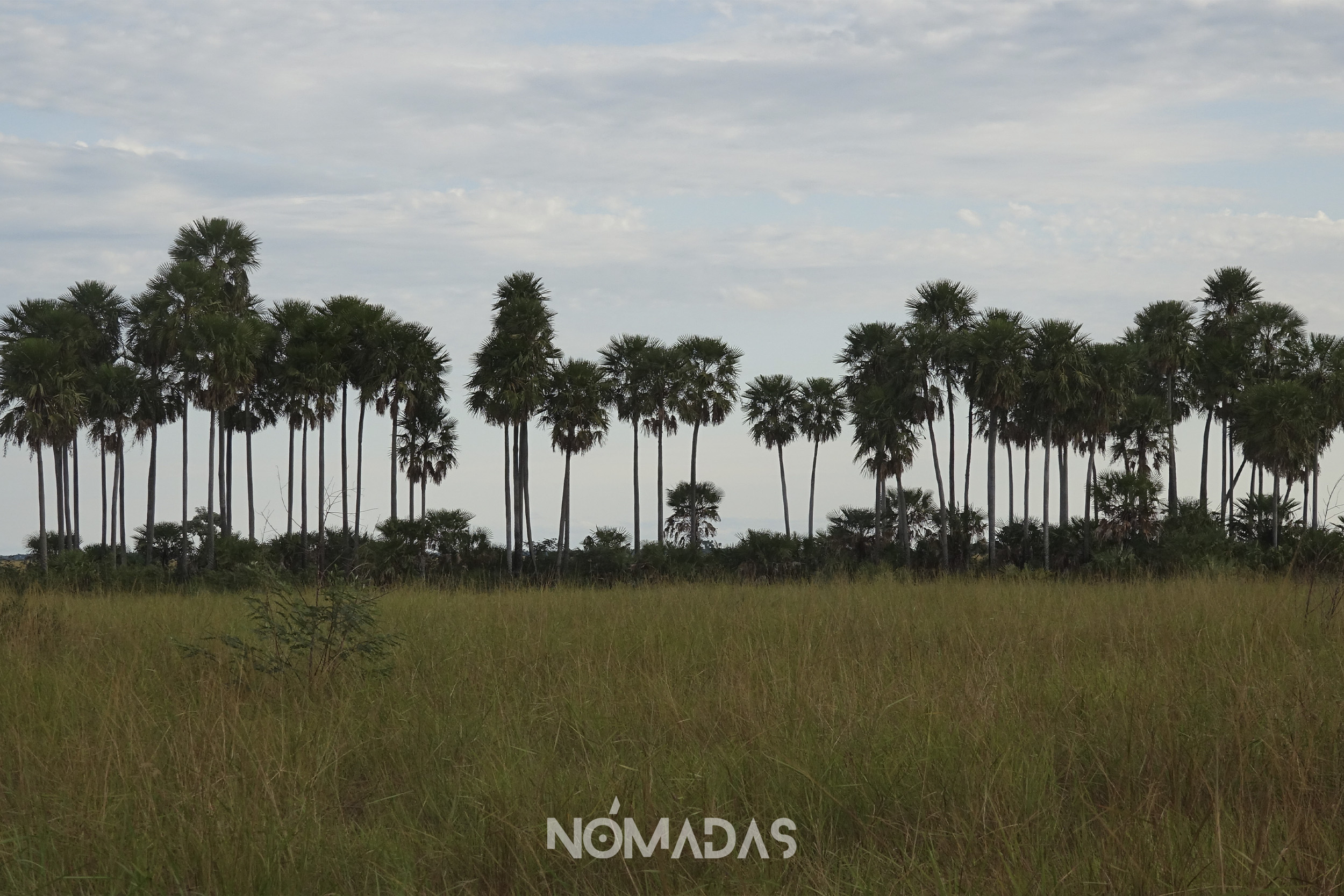
The palm and swamps islands within the Otuquis protected area, enrich the Great Landscape.
Bolivia and Paraguay are joining forces to consolidate a biological landscape of 20 million acres unique in the world, located mainly in South American Gran Chaco, its ranked as the second largest biological landscape after the Amazon.
28 de julio de 2022
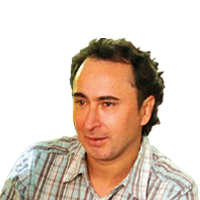
Roberto Navia Gabriel
Journalist
A single forest can not absorb all the pollution produced by mankind, and also it can not shelter all the animals in extinction or the animals who are running away from the shackles of captivity or the fangs of the mafias. A solitary jungle -even if it bears on its chest the title of protected area- is not enough to shelter the uncontacted indigenous people who -of their own free will- decided to become invisible to «civilization».
A lagoon distanced from the native communities – who are its natural and legendary guardians – can hardly survive the diversion of their affluents rivers and the deforestation of its headwaters that generate rainfall for the rest of the planet.
Wherever you listen to the Great Landscape it’s a birdsong of birds that come and go. Some of them help the springs to be born and others help to carry away the last cold and ensure the summers and rain do not disappear from the planet.
The loneliness of nature- is a silent enemy that weakens the forest, weakens the marshes, weakens the quiet savannahs and the birds that come from distant skies to nest in the treetops, weakens the jaguars that need a territory without borders to develop and weakens the microorganisms that at first sight are not seen, but inside the bark of the vegetation and in the subsoil of the earth, are working day and night to make life continue as well.
In Bolivia there are a group of people and institutions committed to protect the environment and are joining efforts and local borders within Bolivia and Paraguay. They have a common goal which keeps them standing up and overcoming all the threats that are punching the planet. They are working to consolidate and unify almost two dozen protected areas that, added together, form a single body of 20 million acres, or the equivalent of 200,000 km2. It’s a green universe bigger than the size of Uruguay or almost double the size of Cuba. An uninterrupted landscape that has been given the name of Great Chaco-Pantanal Binational Conservation Landscape.
Wherever way you look at it, this green lung of the Great Landscape is the heart that beats within the chest of many forests. It hugs the Bolivian Pantanal and continues on its way through the Chiquitano Dry Forest, through the forests of the Chaco, and ends as a sole being in Paraguay.
Wherever you listen to the Great Landscape it’s a birdsong of birds that come and go. Some of them help the springs to be born and others help to carry away the last cold and ensure the summers and rain do not disappear from the planet. I
t is also the sound of the feet of the uncontacted Ayoreo indigenous people who walk along the paths that their nomadic footsteps create as the days, months, and years go by.
«About 150 Ayoreos in a voluntary isolation survive in the Chaco Forest on the border between Bolivia and Paraguay. Among the records that evidence their presence, holes and marks on trees, tools and huts found, footprints in watering places and abandoned objects. Today they are enduring deforestation, road construction, mega-fires and the advance of the agricultural-livestock frontier. “Both countries must take actions to protect their territories and ensure their survival», says Leonardo Tamburini, Miguel Lovera, Jieun Kang, Miguel Ángel Alarcón and Norma Flores Allende in the article entitled: The Ayoreos, the last isolated people outside the Amazon. Published in the portal Debates Indígenas.
The Ayoreos are hunters, and collectors. These authors explain how their traditional territory covers more than 30 million acres located in the Great American Chaco, the Northern Paraguayan Chaco, the Bolivian Chaco of Santa Cruz, and the Chiquitania. Nowadays the sedentary population of the Ayoreos people amounts to 5,000 people distributed between Paraguay and Bolivia. However, there are still groups in voluntary isolation.
They also confirm the presence of secluded groups in Bolivia and Paraguay. They are known of in both countries and information has been collected methodically and systematically.
«In a little more than ten years, it has been possible to identify areas and circuits of nomadic groups. There are several indicators registered: recent honey extraction holes in trees, marks on tree bark and cacti, utensils and huts found in areas of clearings and new trails, shamanic marks warning others of the presence of a group or the limit to where they can advance without danger of violent clashes, tracks in watering holes and trails in the forest, and objects left near a settlement as a sign of peace, friendship or exchange. Some testimonial indicators are sightings of naked people with weapons or utensils, and voices or shouts heard by non-indigenous people. One of the most important records is the testimony of some Ayoreos elders who remember a relative who never left the forest and who, because of the time that has passed, is presumed to still be alive,» explain the authors of Los Ayoreos, los últimos aislados fuera de la Amazonía, who are professionals recognized for their contribution to knowledge about indigenous peoples and environmental defense. Leonardo Tamburini is the executive director of ORÉ, a lawyer from the Università degli Studi di Macerata (Italy), former director of the Center for Legal Studies and Social Research (CEJIS) of Bolivia and legal advisor to the Guaraní Autonomy of Charagua Iyambae. Miguel Lovera, Jieun Kang, Miguel Ángel Alarcón and Norma Flores Allende are members of the Amotocodie Initiative, a Paraguayan institution that works for the protection of the Chaco and accompanies the Ayoreo people in the defense of their land, culture and way of life.
In the Kaa Iya National Park, which extends over 3.4 million acres and is the largest in Bolivia and one of the largest in the world, there are notices indicating that uncontacted indigenous people live there and that they are protected by the Political Constitution of the State. However, this protection is taking place on paper only because the ancestral territory of the indigenous peoples has been punched by the advance of deforestation to convert the Chaco forest into agricultural fields. The threat to the Kaa Iya, the Isoso Wetlands and Parapetí river is increasing, despite the fact that they are RAMSAR sites of international interest and sources of food for the indigenous communities.
***
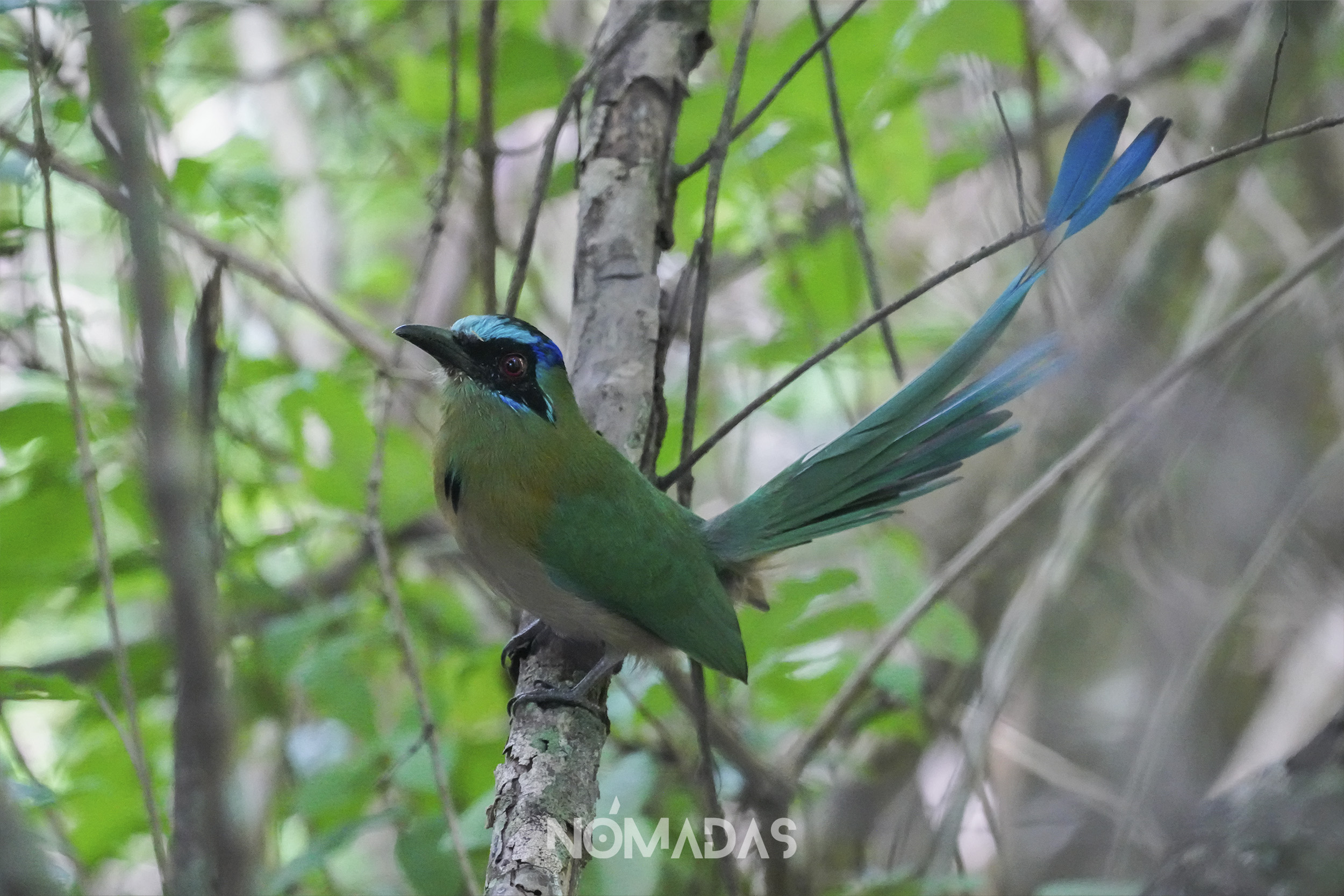
Life is being shown at any way you look on the Grand Landscape. Photo: Roman Nussbaumer.
Wherever you walk, this piece of Binational Conservation is a long and vital path with forests and bushes, savannahs, grasslands, and wetlands that are home to capiguaras and armadillos, lizards and deers and freshwater wolves, along with the Chiquitano, Guarani and Ayoreo peoples for whom, this is the only world they have and where they still feel safe.
About 150 Ayoreos in a voluntary isolation survive in the Chaco Forest on the border between Bolivia and Paraguay. Among the records is evidence of their presence such as holes and marks on trees, tools and huts found, footprints in watering places and abandoned objects.
Of those 20 million acres that conform the Great Binational Conservation Landscape Chaco Pantanal, 12 million are in Bolivia, and of that amount, 9.5 million are within the San Matías, Kaa-lya and Otuquis National Parks, as well as in municipal and departmental protected areas as important as the Ñembi Guasu Conservation and Ecological Importance Area, which in Guaraní means The Great Refuge. It has a total area of 1,207,850.2 acres and was created in 2019 by the Autonomous Guaraní Indigenous Government of Charagua, in the department of Santa Cruz, in the ancestral territory of the Guaraní people.
The director of the foundation Nature, Land and Life (NATIVA), Ivan Arnold, remembered that the consolidation of this large conservation area was achieved through the 2019 law of Indigenous Autonomy. The news caused great impact nationally and internationally, not only because it was the first time that an indigenous autonomy made use of their powers to put under direct protection their territory, but because the creation of this area enabled the connection of a big landscape between two national protected areas of Bolivia: Kaa Iya National Park and Integrated Management Area of the Gran Chaco and Otuquis National Park and Integrated Management Area, which protects the Bolivian Pantanal. Not only that, it also establishes the direct link with Defensores del Chaco National Park, which is part of the Gran Chaco Biosphere Reserve in Paraguay; thus configuring the Great Chaco – Pantanal Binational Conservation Landscape.
Paraguay also has seven million acres in the Great Landscape, which extends over the Great Chaco Paraguayo Biosphere Reserve, including the protected areas Defensores del Chaco, Río Negro, the Campo Iris Private Nature Reserve and the Cerro Chovoreca Reserves, as well as some private and public properties.
The Chaco will govern the natural kingdom, but also the Pantanal with it’s wetlands and plains, the Cerrado, and the Chiquitano Dry Forest. They will advance in this universe of life where there are more than 3,400 species of plants, 500 species of birds, 150 mammals, 120 reptiles and 100 amphibians that make the Great Landscape one of the most biodiverse places on the planet.
***
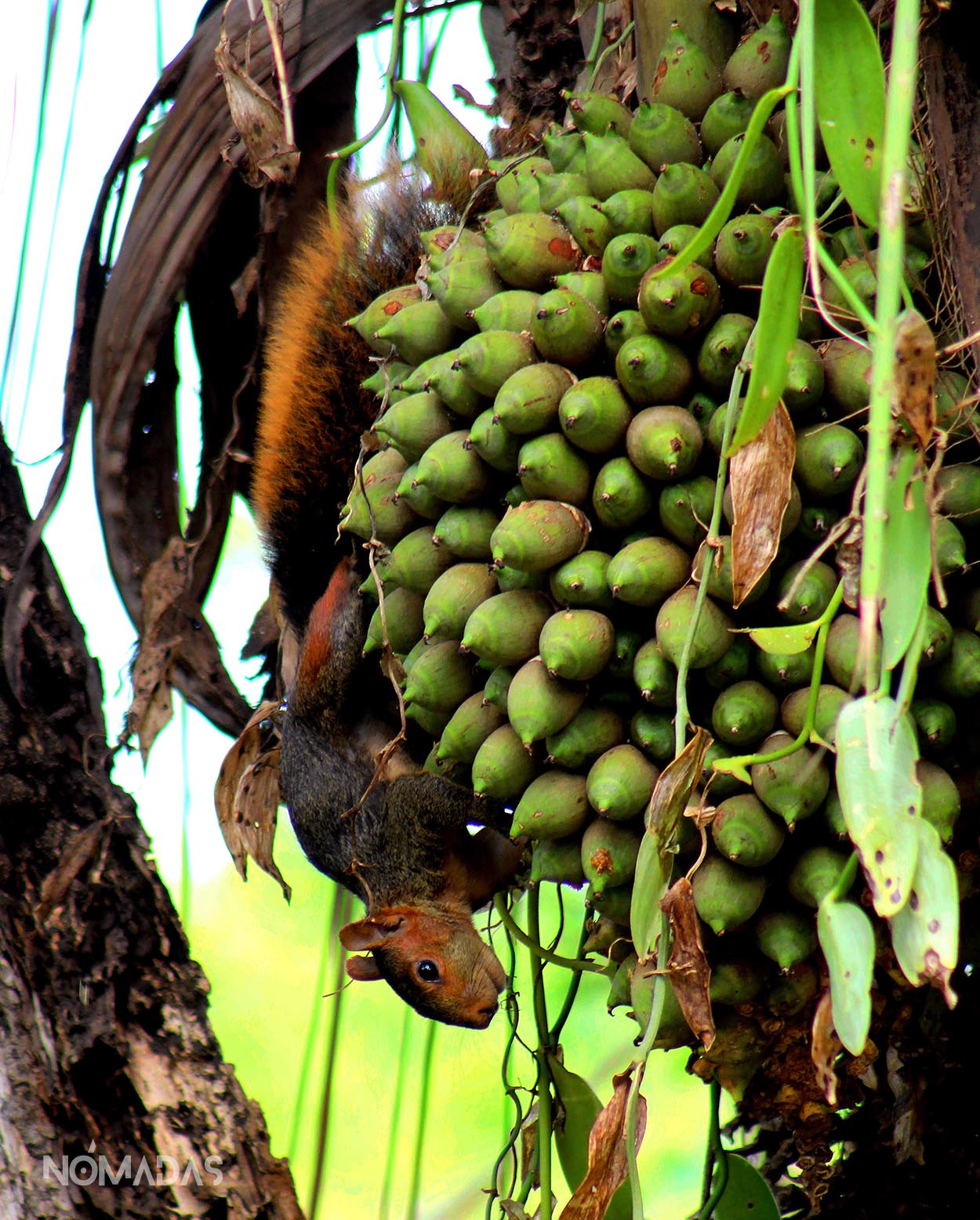
Squirrel in a plant foraging for food. Photo: Clovis de la Jaille.
It was two o’clock in the afternoon when a park ranger of Otuquis National Park was looking calm at the Paraguay River right in front of him while an autumn light was painting the river’s view with an orange color that made him feel alive every day when he wakes up in the immense Puerto Busch camp, where he is in charge of guarding this protected area in this part of Santa Cruz, Bolivia, situated at the border of the colossal Brazil.
Anchored on the riverbank was also a little boat that still bore the traces of its best years, when it served as a means for park rangers to try to discover any human threat against the protected area that has an extension of 1,022,423.5 acres. Now, that beautiful piece of metal moves with the occasional waves of the river and a couple of crocodiles that come and go with the water pushed by the sun’s attractive rays.
“The boat was my home for many years,» says the park ranger, with an evident affection for that metal that he would like to see once again plying the river. Or, perhaps, turned into a museum if indeed no boat expert manages to resurrect it.
Otuquis National Park is located in the southeast of the department of Santa Cruz (Bolivia), in the provinces of Cordillera and Germán Busch, in the municipalities of Charagua, Puerto Suárez, Puerto Quijarro and Carmen Rivero Tórrez. It is one of the luminous points that are part of the Great Chaco-Pantanal Binational Conservation Landscape.
From Puerto Suarez you go through the Otuquis by the gravel road that leads to Puerto Busch. This national park is the epicenter of the Pantanal. Which it is landscape protected by the international title of being a RAMSAR site. The papers were forgotten in some desk. The drought exacerbated by human actions, such as deforestation, is hitting the animals and vegetation that are losing their wetlands year after year.
The Great Chaco-Pantanal Binational Conservation Landscape is not a concept or a name on a paper.
In another place on the Great Landscape, inside a large house, on the heights of Chochis, in the municipality of Roboré, in the middle of the Chiquitano Dry Forest, more than a hundred people are gathered in the first binational Bolivia-Paraguay transboundary meeting. Focused on the exchange of experiences and training in the management of forest fires in the Great Chaco-Pantanal Landscape. Men and women who have spent more than half of their lives putting out forest fires, fighting the metallic tentacles of illegal deforestation, studying the terrible effects of climate change, designing and making efforts to unify ecosystems and consolidate natural corridors that know no borders. Although they have the legal grounds to be a protected area, in many cases, they endure threats and attacks that are turning forest with sustainable vocation into land to produce food for livestock.
The threat to the Kaa Iya, and the Bañados de Isoso Wetlands and Parapetí rivers is increasing, despite the fact that they are RAMSAR sites of international interest and sources of food for the indigenous communities.
The participants of the First Binational Bolivia-Paraguay Transboundary Meeting know that the paper titles of protected areas or National Parks or Forest Reserves have not been of much use in guaranteeing the good health of the ecosystems and that every year millions of acres of forest are consumed by forest fires and by indiscriminate deforestation.
For this reason, many of them believe that a greater step must be taken: to connect nature and everything in between, giving rise to a unique landscape: the Great Binational Chaco Pantanal Landscape.
Outside this meeting house, there is a small parsimonious forest with trees that provide an exquisite temperature.
Under these trees the magazine Nómadas set up a space for interviews, to talk about conservation and how to ensure a world where the color green does not disappear.
A journey through words, pushed by the breeze of vegetation that sang to the sound of the birds that moved the branches and fluttered before taking flight.
José Luis Cartes, executive director of Guyra Paraguay, has arrived with several of his compatriots from Asunción, travelled by a road that left Asunción and then became a dirt road that entered Bolivia, the territory of the Indigenous Autonomy of Charagua (Cordillera province). Some municipal authority had to go to reach the border, because on the way, being an area where there are cattle properties, he would encounter roadblocks or could get lost in the twists and turns of the narrow roads that zigzag through the Chaco forest that opens the way to the Chiquitano.
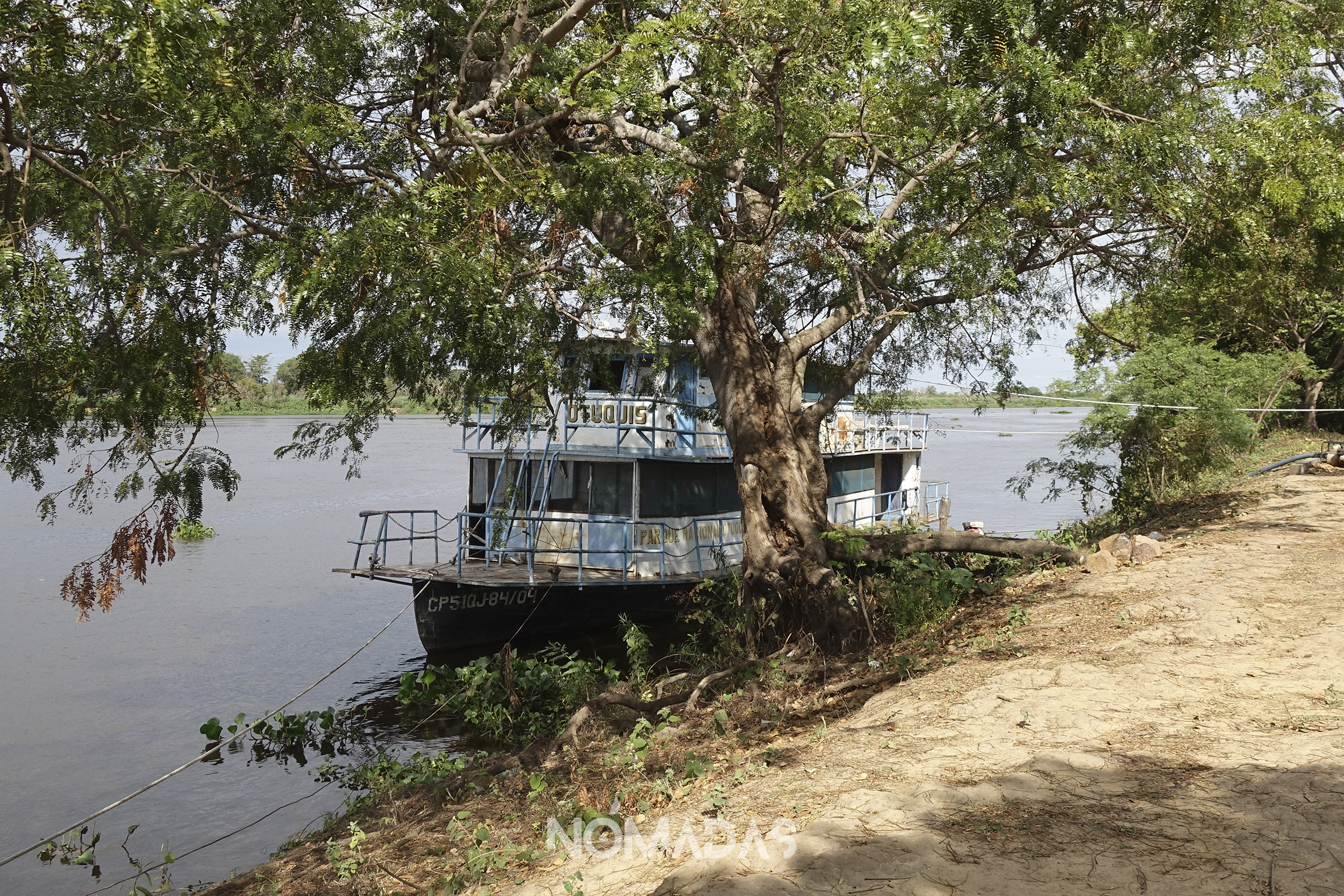
The park rangers boat anchored at the Puerto Busch camp in Otuquis.
He is clear about how to define the Great Landscape he knows and defends: «It is one of the great extensions we have on planet Earth, where indigenous communities can coexist in harmony with nature, where there are many species that are threatened by extinction, as unique as the Guanaco Chaqueño. It is the sum of places where nature expresses its maximum splendor through these species of animals, plants and people».
Wherever you walk, this piece of Binational Conservation is a long and vital path with forests and bushes, savannahs, grasslands, and wetlands that are home to capiguaras and armadillos, lizards and deer and freshwater wolves, along with the Chiquitano, Guarani and Ayoreo peoples who, in this only world they have, is where they still feel safe.
While José Luis Cartes says his eyes become very lively.
In Paraguay, the Great Landscape encompasses the Great Chaco Biosphere Reserve, which covers more than 7 million acres and crosses the border to embrace the Bolivian national parks Kaa Iya, San Matias and Otuquis. A whole strip of Chaco forests, dry Chiquitano, cerrados and marshland: the true home and one of the few refuges (at present) of the Great feline of America, the jaguar. Which is now seriously threatened by the mafias that hunt for it, even under the stones, rip off its fangs, and traffic them in the black markets of China.
It is called The Great Landscape because it has almost 20 million acres. From that at least 12 million acres are protected areas, that is, they have a legal shell. At least in theory, must be cared for because it is an ecosystem that benefits the country, the continent, and the rest of the world. But in real life, the fact that they are protected areas does not mean, nor guarantee, their conservation. The remaining eight million acres are hit every day by deforestation, encroachment, land trafficking, and forest fires that get into the bowels of the Great Landscape to constantly threaten it.
Proof of this is the data revealed by the Foundation for the Conservation of the Chiquitano Forest (FCBC), regarding the fact that the department of Santa Cruz, for example, loses more than 500 acres of forest every day. A situation that puts the water and food security of millions of inhabitants at risk, in addition to a strong impact on biodiversity and ecosystems. Furthermore, the FCBC maintains that the loss of forest cover, linked to agriculture, extensive cattle ranching, indiscriminate logging and mining, reduces soil fertility, increases erosion and degrades the land, starting a slow but unstoppable process. In this sense, they emphasize the institution of protected areas, which protect watersheds and wetlands, allow water conservation, land restoration, and with good governance achieve efficient resource management, allowing sustainable development and production. Thus, ensuring our livelihoods and enhancing our options for adaptation to climate change.
A big part of this deforestation is taking in place in the Chaco, which is the largest landscape in South America after the Amazon, and occupies the map of Bolivia, Argentina, Paraguay and Brazil, whose green plain totals one million square kilometers, or the equivalent of 100 million acres.
José Luis Cartes is aware of this, and he believes that, although there is much to be done – such as adding up Brazil and Argentina to form part of the Great Landscape. A very important step that the governments of Paraguay and Bolivia should take is to encourage the owners of the natural ecosystems that exist in the ecoregion to receive incentives to conserve these areas, whether they are cattle ranchers, farmers or indigenous communities.
Saúl Arias, executive director of Paraguay’s Eco Pantanal Bahía Negra Association, an organization that works for the conservation of the Pantanal and environmental education to rescue the cultures of the indigenous communities, describes that in recent times there has been a lot of droughts and that the Negro River, bordering Bolivia, has also dried up, unleashing a whole chain of effects, such as the decline of wildlife.
The Chaco will govern the natural kingdom, but also the Pantanal with it’s wetlands and plains, the Cerrado, and the Chiquitano Dry Forest. They will advance in this universe of life where there are more than 3,400 species of plants, 500 species of birds, 150 mammals, 120 reptiles and 100 amphibians that make the Great Landscape one of the most biodiverse places on the planet.
Saúl Arias and José Luis Cartes, consider that, with the consolidation of the Great Landscape, as an uninterrupted biological corridor, it is possible to protect the more than 700 species of existing birds. More than fifty ecological systems that are within the South American Chaco, the more than 4000 varieties of plant life, among which are the white and red quebracho that are used as medicine, and the carob tree, as food for the ancestral peoples.
Saul Arias feels that, in addition to the Chaco, the Pantanal is not being cared for as it should. The forest fires have increased and become more uncontrollable, and if nothing stronger is done to prevent this, the health of this ecosystem will worsen. Therefore, the consolidation of the Great Landscape is a vital solution to save this area of the planet.
The Bolivian Pantanal is located in southeastern Bolivia, in the department of Santa Cruz de La Sierra, and this territory is largely protected by the Otuquis National Park and the San Matías Integrated Management Area.
According to the Pantanal Observatory, this landscape provides environmental services such as climate regulation, biological control, and soil fertility. Also, it is home to 53 species of amphibians, 159 mammals, 98 reptiles, 656 birds, 325 fish, 1,030 butterflies and more than 3,500 plant species. In addition, the Observatory warns that the Marsh Deer (Blastocerus dichotomus), the Giant Otter (Pteronura brasiliensis) and the Hyacinth Macaw (Anodorhynchus hyacinthinus) are highly endangered.
Right now, there are only three marsh deer that are inside of Otuquis National Park. You can barely see them for a fragment of a second, and by the time it takes for your eyes to blink, they are gone. They have left a trail of beauty orchestrated by their gallops of mythological animals. For a few moments they keep their four legs in the air. Thus, they are seen leaving and getting lost in the grassland plain that then meets islands of palm trees. The deer have disappeared as if they had been abducted by some power not of this world. The capybaras can be seen without any hurry. But not like before, says a park ranger, who struggles with how the Pantanal’s drought is depleting the animal universe.
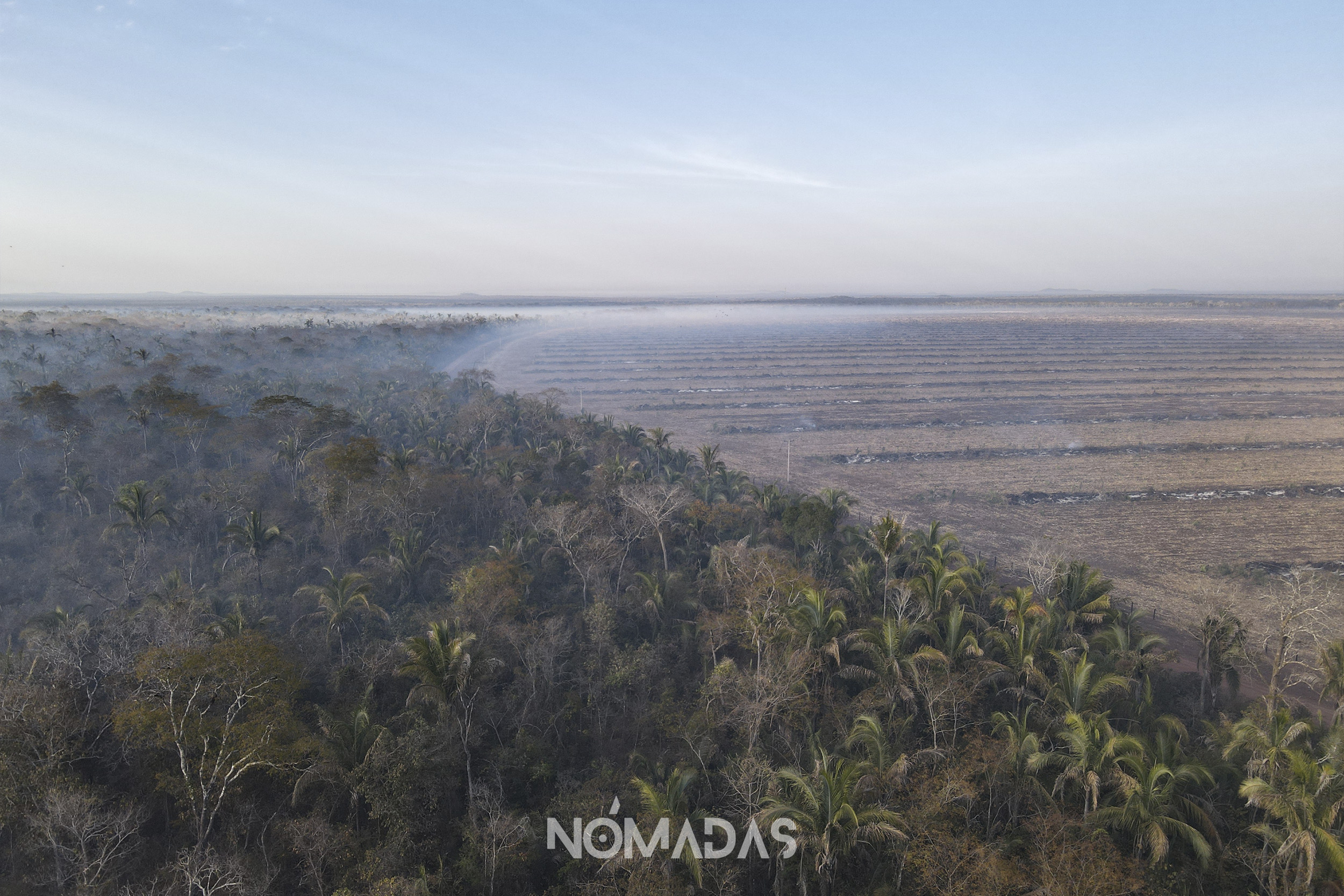
The agricultural frontier has no borders. Ecosystems are losing their forests.
With all the natural wealth that remains for Saúl Arias the Great Landscape, of which the Pantanal is a part, must be understood as a living being without borders, for which each country has the responsibility to protect what is found in its territory and to work in coordination with the rest of the territory found in Bolivia.
A big part of this deforestation is on the Chaco, which is the largest landscape in South America after the Amazon, and occupies the map of Bolivia, Argentina, Paraguay and Brazil, whose green plain totals one million square kilometers, or the equivalent of 100 million hectares.
In Bolivia, Adita Montaño, director of Natural Resources of the Government of Santa Cruz, also agrees that the Chaco-Pantanal Binational Great Conservation Landscape is the bearer of enormous ecosystem services for Bolivia, and Latin America. Along with the fact that the world, the environment, and biodiversity have no borders. Therefore, he emphasizes, it is a landscape that really helps to protect this area, which is vital for human beings, animals and vegetation.
Verónica Sanjinés, head of the Sustainable Cities program of the foundation Nature, Land and Life (NATIVA), feels that The Great Landscape allows us to see the alternatives for joint solutions to all these common problems, such as deforestation and forest fires.
With her experience in helping to create protected areas, Sanjinés knows that forests have no borders, that they are shared ecosystems and should be managed under common criteria. Even if they are in neighboring countries. But for this to happen, he proposes, «it is important that each nation commits to reviewing its legal norms and environmental protocols and seeking mechanisms for an international agreement that will allow us to cross borders to help each other in situations such as fires, to shake hands and help each other.”
Robert Salvatierra has held the position of head of protected areas in several parks since 2000, such as Amboró, Noel Kempff, Kaa Iya and now in Otuquis. With this experience, he assures that the consolidation of a great landscape as an interconnected landscape is vital for the continent, because the environmental problem is not only of one country, but an integral one.
Ramón Daniel Villalba, fire management consultant for the Guyra Paraguay Foundation, does not doubt that borders were created by countries. He proposes to see the Great Landscape as somewhere where identity documents have no relevance.
«We have the unique possibility for Bolivia and Paraguay to do something about this ecosystem that is so useful for humanity. There are two very important factors in the life of the Pantanal: water and fire. We must work on the water and fire cycles, which are what define what will happen in this ecosystem. If we protect it from risks, we are protecting life. The great landscape is a great nation,» he emphasizes.
For Natalia Calderón, director of the Friends of Nature Foundation (FAN), the Great Landscape, although it has protected areas and indigenous territories, does not have sufficient instruments to truly manage these areas. Which, although they have responded adequately to pressures up to now, are at a critical moment of weakening due to lack of resources and few park rangers.
The Great Landscape is a conservation figure. There is a need for international, transboundary agreements that lead to tangible things. ZICOSUR (Integration Zone of Central Western South America) seems very interesting to me and I think we need to give it more strength, the impulse to think about transboundary public policies,» says Calderón, for whom the most important threat to the Great Landscape is deforestation: «We are talking about the municipalities in Bolivia with the highest rate of deforestation. In Bolivia, until 2010, the deforestation rate was 200,000 acres per year. Since 2015 this rate has grown, and from 2019 to 2021 it is 400,000 acres. On the Paraguayan side, the same thing».
He believes that we must think not only about conserving these important places, but also about how to turn them into spaces for development, agriculture, and sustainable livestock farming.
That is where we must make our contributions. Not only to say no to burning, and no to deforestation, but how to burn, in an adequate and concerted manner. Additionally, how to produce in a sustainable way without the need to cut down forests. Environmental organizations must also think about the economic side and must put these possibilities in numbers to demonstrate that sustainability is more profitable. Mining is also a sensitive issue and has a relationship with water. “This region, without climate change, already suffers from water shortages. With climate change, there will be greater water shortages, and if we add mining to the mix, which has catastrophic consequences, will have a greater impact on the quantity and quality of water», warned the director of FAN.
Víctor Hugo Magallanes, responsible for the Chaco Pantanal Closed Landscape at WWF Bolivia, emphasizes that the Great Pantanal (whose Bolivian and Paraguayan zones are part of the Great Chaco-Pantanal Binational Conservation Landscape), «is the largest continental freshwater wetland in the world with approximately 16 million acres (Junk et al., 2006). Equivalent to three times the territory of Costa Rica, with extensive areas of practically imperceptible slope of up to 1 cm/km, facilitating the flooding of thousands of km2. Geographically located between Bolivia, Brazil and Paraguay, it is not an isolated system, it is the scenario where unique ecoregions such as the Chiquitano Dry Forest, the Chaco, the Cerrado, and the large floodable savannas are connected (Azurduy, H. 2008). Contributing to the formation of an articulated ecological mosaic that concentrates more than 3,500 species of vascular plants, it is also considered by experts as the center of the greatest diversity of aquatic plants in the world (Pott and Pott, 2002). Which play a key role in the processes of movement, reproduction, refuge, production, and accumulation of food for the different groups of fauna associated with aquatic environments, as well as in the processes of purification/decontamination of the bodies of water where they are present».
Juanita Vargas Morán, a volunteer firefighter in the community of Chochis, in the municipality of Roboré, in the heart of the Chiquitano Dry Forest, knows that the hardest thing she has to endure when forest fires happen is seeing how animals and plants die in a dreadful way.
«It breaks my heart. Sometimes we have to wait for a water tank to arrive to put out the fire,» he says.
With all the natural wealth that remains for Saúl Arias the Great Landscape, of which the Pantanal is a part, must be understood as a living being without borders, for which each country has the responsibility to protect what is found in its territory and to work in coordination with the rest of the territory found in Bolivia.
Water is the key.
«The Great Chaco Pantanal Landscape is a great opportunity to take care of fresh water. We must coordinate, among all the countries, among the municipalities, the actions to protect it and to strengthen the guardians of the forest, which are the firefighters and the park rangers,» he proposes.
Juanita Vargas is sitting under the shade of the trees of a small forest located in the heights of Chochis. «The Great Landscape is a hidden paradise where you have everything: peace, calm, and the nature that God gives us. We must not lose this. This is incomparable».
José Ávila Vera, director of Protected Areas of the Autonomous Government of Charagua, knows that when we talk about the Great Landscape, we are not talking about something huge but enormous. Not only because of its extension, but also because of its importance, since the entire biological corridor contains different types of ecosystems, such as the Chaco forest, the Chiquitano forest and the marshlands.
«Now, what does Charagua have to do with this? A lot, because in the end, we have the largest amount of surface area in a good state of conservation and, since we are also in the center, we are the hinge with the entire body of the Great Landscape.»
José Ávila says that work has been done in two scenarios. On one hand, in identifying exactly the conservation areas that are intact, and, on the other hand, areas that are being lost every year due to the advance of the agricultural frontier and illegal settlements that are fragmenting the conservation areas.
Ivan Arnold, from the NATIVA Foundation, of which he is director, has been strong along the creation and strengthening of the Ñembi Guasu as the first indigenous Protected Area in Bolivia. He is sure that this is the missing piece in this puzzle of the Great Chaco-Pantanal Landscape. The Ñembi Guasu is an area of 1.2 million acres and allows us to think of a continuous conservation corridor that goes from the west of the Kaa Iya Park to the east of the Otuquis.
«There we have more than 6 million continuous acres that are dedicated to conservation. It is the heart of the Great Landscape,» says Iván, who is passionate about the rainforest and the life it harbors.
Right now, he is enjoying the friendly view that is pouring down from the cliff that, like a protective shield, is advancing through the towns of Santiago de Chiquitos and Chochis, among others. Yesterday he visited other places of the wooded corridor. His large and insatiable globetrotter body has walked through the Ñembi Guasu which is entered through the Robore. Five kilometers from this native village he is building a small house to shelter biologists, environmental technicians, and park rangers who, unfortunately, every year have a fierce encounter with forest fires that political and economic power cannot avoid.
That is why Iván Arnold thinks of the Great Landscape not only as a matter of forest protection, but also as sustainable productive development for the communities, environmental education, and work for the authorities and territorial governance.
The director of NATIVA is sad to see how protected areas are becoming islands in the midst of seas of destruction. That is why he proposes to think of big solutions that are on par with the big problems such as droughts, floods, fires, and deforestation.
«Unifying the protected areas, through a large landscape, is part of the solution. It will require not only the participation of Bolivia’s different levels of government, but the municipalities, which are closest to the people, and can plan immediate protection actions. There are few places in the world with the potential that the Gran Paisaje Chaco-Pantanal has: 20 million acres where uncontacted indigenous people also live. “It is a unique place in the world», says Iván, looking at the horizon as if he were on top of the cliff observing the continuous conservation corridor of the Great Landscape – that from east to west includes the Kaa Iya, Ñembi Guasu and Otutuis protected areas; from south to north: Defensores del Chaco of Paraguay and again the Kaa Iya, which with its more than 3.4 million acres, is the largest protected area in Bolivia.
The NATIVA Foundation has captured this well in El Chajá, their newsletter on environmental issues. There, it has made it clear that the main objectives should be nature conservation, connecting biodiversity, and facilitating sustainable livelihoods for people, their customs, and traditions within a network that integrates the largest and best conserved protected areas of the Great Chaco. Furthermore, strengthening the core areas, linked together by corridors of biological-cultural connectivity, consolidated from local criteria and consensus, in a landscape approach to conservation. Viable options for maintaining connectivity are based on the protected area, solutions based on nature, production, and sustainable development favorable to biodiversity.
Just as the hands of many human beings are destroying the planet, there are others who are healing the wounds of the forests and putting together strategies, unifying protected areas, and linking them to each other to form a single biological and natural corridor to become a protective wall against the tentacles of deforestation. The great industry that eats everything.
The Great Chaco-Pantanal Conservation Landscape is there, crouching like an animal, no longer defenseless, but strengthened so that life on the planet continues to sing.
***
English Translation: Erika Arnold, Lisa Corti and Stasiek Czaplicki.
This journalistic chronicle has been elaborated in alliance between Fundación Nativa and Revista Nómadas.
The South American Chaco is the last refuge of the Ayoreos in voluntary isolation. The whole world gets benefits by protecting their trees.
Te contamos desde el interior de los escenarios de la realidad, iluminados por el faro de la agenda propia, el texto bien labrado y la riqueza poética del audiovisual y de la narrativa sonora, combinaciones perfectas para sentir el corazón del medioambiente y de los anónimos del Planeta.
